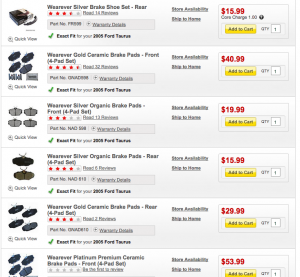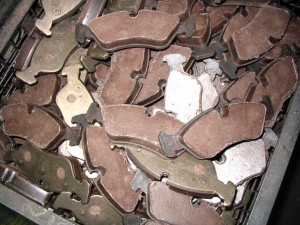 If you look at most parts catalogs online, you will see up to six different brake pads sets for your vehicle. What is the deal? Parts are parts? Right? Wrong. The truth is that you are only paying a little for pads, advertising and a warranty. The truth is what you are paying for is research, testing and development.
If you look at most parts catalogs online, you will see up to six different brake pads sets for your vehicle. What is the deal? Parts are parts? Right? Wrong. The truth is that you are only paying a little for pads, advertising and a warranty. The truth is what you are paying for is research, testing and development.
Going to skimp on pads because you plan to drive like an old lady? Consider this, the one time you need to use the full potential of the pad, the performance will not be measured in dollars and cents, but inches and feet.
Aftermarket brake pads require a great deal of testing and engineering because they are made for a specific vehicle. A quality brake pad manufacturer will spend a lot of time and money developing a brake pad application for your vehicle. This includes simulated and on-the-vehicle testing. These types of testing are time and equipment intensive.
 Selecting the right friction material is a difficult task. I could say that you should select the most expensive pad that your supplier offers. But, I know that the right pads for the customer are often not the ones at the top or bottom of the price column. It is a matter of looking at the engineering, reputation and appearance of the product. But, most of all it is about trust and reputation.
Selecting the right friction material is a difficult task. I could say that you should select the most expensive pad that your supplier offers. But, I know that the right pads for the customer are often not the ones at the top or bottom of the price column. It is a matter of looking at the engineering, reputation and appearance of the product. But, most of all it is about trust and reputation.
The foundation of any brake pad is the backing plate, but it is the first area a cut rate brake pad manufacturer will skimp on. They will used thinner steel and chemical attachment methods to reduce costs. If a company is not willing to spend money on the foundation of their product, it does not speak well for the rest of the pad.
The sign of a bad plate might be how it fits in the caliper bracket. If it takes a hammer or a great deal of force to install the pad in the caliper bracket, it could be a sign that the tooling for the backing plate is worn out. If the tooling die used to stamp the backing plate is worn out, the ears and other contact points will increase in size or become distorted.